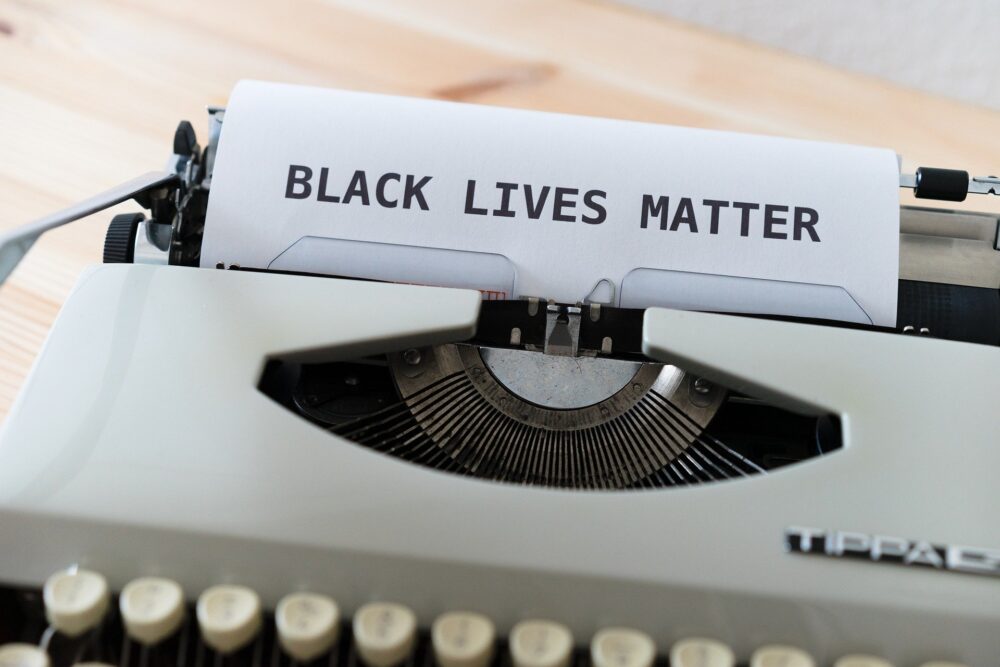This article begins a series on anti-racism in STEM co-authored by Northeastern alum Claire Williams. A fully collaborative effort, see the list of authors, contributors, as well as the series in its entirety at the following website: https://antiracisminstem.wordpress.com/
NU Sci foreword from Editor-in-Chief Binh Dang:
2020 has been a year of reckoning for the United States’ racist upbringing and continued systemic racism in the wake of the killings of George Floyd, Breonna Taylor, Tony McDade, and Ahmaud Arbery. This is by no means a complete list, but a subset of far too many Black Americans who are victims of systemic and unjust violence. STEM is unfortunately no different in its political and racially divisive past. While science has a reputation among the public as being objective and apolitical, that isn’t the truth and never has been. It’s been used as a tool to oppress—of note are the eugenics movement of the early 20th century and the Tuskegee Syphilis Study.
We at NU Sci understand that we need to be part of the change to acknowledge and improve upon science’s unsavory past and make the future better for all people, especially underrepresented groups in the field. We support and believe Black Lives Matter, and we’ve had the privilege to work with an alumnus and #STEMforBLM to hold firm in that support. This is a series to promote antiracism in STEM and educate those in the field about the historical failures of science to support Black, Indigenous, and People of Color that still affect those humans today. I want to thank them for their hard work in making this series comprehensive and profoundly enlightening.
Discovery, innovation, and progress are nearly synonymous with science. Despite our history, we need to ensure that everyone is included when we mention these words. There is too much good in these ideals to be held back by reticence to change and compassion. While we cannot change the past, we can and have the obligation to create a more inclusive, equitable future. But the first step is to educate, and that’s what these authors intend to do with these essays.
About
What is the purpose of this document?
While observing and participating in recent discussions about the racism that pervades institutions, departments, and scientific discourse, we (the coauthors) have noticed a set of standard arguments against anti-racism action within STEM. This document began as a repository for scholarly literature surrounding the experiences of BIPOC in STEM to reference as counterarguments, but has evolved into a more formalized, evidence-based reference and website. Our goal is for this document to facilitate more productive conversations (and in turn, tangible systemic changes) toward addressing racial discrimination in STEM.
Who are the authors and reviewers?
This document’s coauthors are current students or recent graduates in various subfields of biology. It is important to acknowledge that none of the coauthors identify as Black. While we will never understand the perspectives and experiences of the Black community, we believe that allies have a responsibility to take action and speak out against racism. By compiling published academic literature, we hope to amplify research and perspectives of BIPOC scholars, rather than speak on their behalf.
We also strongly believe that Black voices should be represented in this document. Our team of reviewers includes members of the Black community, and they have provided critical feedback to ensure that our responses do not misrepresent or overshadow Black scientists. However, we are open to amending this document if any responses are still found to be offensive, inaccurate, or misleading. Comments and suggestions can be submitted here.
What does BIPOC mean?
BIPOC stands for Black, Indigenous, and People of Color. According to the BIPOC Project, this term was created in order to “highlight the unique relationship to whiteness that Indigenous and Black people have, which shapes the experiences of and relationship to white supremacy for all people of color within a U.S. context.” The origins and usage of this term are described here.
Why do we capitalize Black but not white?
Capitalizing Black recognizes that Black is a cultural identity and ethnicity ‒ one that does not rely on ties to other ethnic or national identities, nor does it rely on a “hyphen-American” qualifier. It serves to unify a population of people whose heritage was erased by slavery [1].
While there is now broad agreement within professional journalism that “Black” should be capitalized, there is not the same level of agreement regarding capitalization of the term “white” [2]. Some style guides and journalism associations choose to capitalize all racial or ethnic identifiers, including the race “White”, showing these are proper nouns [3], [4]. After numerous conversations with peers who identify as BIPOC, reviews of editorial pieces and perspective literature, and extensive research of the etymology of white, we (the coauthors) have decided not to capitalize “white.” The qualifications for identifying as “white” have varied throughout history, as evidenced by the U.S census. Throughout the 20th century, biracial and multi-ethnic people whose heritage included any “white” lineage could not be considered white on the census [5]. This denotes that “white” is the absence of any other race, including Black. The label “white” has been used to define an exclusive group of people who were given preferential legal and societal rights, even as the term evolved [6], changing who qualifies to hold these societal privileges. Thus, we do not feel that the term “white” refers to a consistent entity in the way that proper nouns should, which informed our decision not to capitalize it.
[1] Why we capitalize Black (and not ‘white’) (Columbia Journalism Review, 2020)
[2] The decision to capitalize Black (AP blog, 2020)
[3] NABJ Statement on Capitalizing Black and Other Racial Identifiers (2020)
[4] Racial and Ethnic Identity (AP Style Guide)
[5] Chapter 1: Race and Multiracial Americans in the U.S. Census (Multiracial in America, Pew Research Center, 2015)
[6] Plessy v. Ferguson 1896
1. “There is no evidence of racism in STEM.”
First, it is important to distinguish between the “method” of science and the “enterprise” of science [1]. The scientific method is an objective strategy to understand natural phenomena. The scientific enterprise describes how experiments are conceived, performed, and interpreted in real practice. While the scientific method is impartial, the scientific enterprise is subject to individual biases and societal values [1].
There is a large body of evidence demonstrating that racism, particularly anti-Black racism, is prevalent within the scientific enterprise. 62% of Black employees and 42% of Hispanic employees in the STEM workforce say they have experienced racial discrimination in recruitment, the hiring process, or competing for promotions [2]. Racial bias often manifests as microaggressions: commonplace indignities that (whether intentional or unintentional) communicate a hostile or derogatory message to BIPOC [3]. For example, women of color faculty report being frequently mistaken for university staff or graduate students [4]. Black professors are often perceived by their colleagues to have been hired primarily for their underrepresented minority status, and feel added pressure to prove their legitimacy as a scholar [5], [6]. The #BlackintheIvory tag on Twitter contains many more anecdotes of racial microaggressions in academia.
Microaggressions are examples of individual racism, a term that describes a person’s prejudices and behaviors (both conscious and unconscious). Racism can also manifest at the systemic level. Systemic racism refers to “the policies and practices entrenched in established institutions which result in the exclusion or promotion of designated groups” [7]. Importantly, systemic racism does not require individual intent; it is a status quo maintained by inaction and apathy, rather than overt acts of racism [7].
Black scholars are underrepresented in nearly every field of STEM, which reflects the existence of systemic racism (Fig. 1) [8]. For example, only 5.9% of non-international students enrolled in life sciences PhD programs in the U.S. are Black, despite making up nearly 13% of the U.S. population [8], [9]. This disparity is even greater at the college and university faculty level: only 0.7% of biology professors are Black, while 83.3% are white [9]. Black, Latinx, and Native American professionals are also underrepresented in Big Tech companies, a trend that has improved very little in the past 5 years [10].

Systemic racism is maintained by current faculty and administration, whether consciously or unconsciously. One study found that professors rated identical CVs less favorably when the applicant had a traditionally Black or Latinx name compared to a traditionally white or Asian name [11]. Black applicants are 13% less likely than white applicants to receive research funding from the National Institutes of Health (NIH) [12]. BIPOC, especially women of color, are less likely than other groups to be invited or assigned to give talks at scientific meetings, despite requesting to present posters more often than their counterparts [13]. In the STEM workforce, the salary levels of Black and Hispanic/Latinx professionals are substantially lower than their white counterparts at all educational levels, even when controlling for differences in field of occupation, experience, and degree-granting institution [14], [15].
The existence of racism in STEM does not only impact students and scientists. Science has a long history of mistreating Black people and other minorities as research subjects. This is evidenced by the experimental surgeries on Black enslaved women (without anesthesia) by “the father of modern gynecology” J. Marion Sims, the unconsenting and deceptive derivation and dissemination of tissue from Henrietta Lacks to create the HeLa cell line, and the blatant disregard of life and lack of consent from patients infected and untreated in the Tuskegee Syphilis Study, among others [16].
The legacy of this unethical research is still felt today, as it contributes to prevalent distrust of the medical and scientific communities by BIPOC [17]. This distrust, combined with inadequate efforts to recruit BIPOC as research subjects, means that BIPOC are underrepresented among clinical trial participants and other human research cohorts [18], [19], [20]. As a result, the benefits of our research are not distributed equally; since the large majority of research subjects and tissue donors are white (even for many diseases that disproportionately affect BIPOC), biomedical research often has reduced relevance for BIPOC [19], [20]. For medical research to apply to ethnic minorities, health and research institutions must build trust with minorities in order to encourage participation [21].
Medical professionals today still discriminate based on false beliefs about race which can directly impact patient care. In one study, 40% of medical students reportedly believed that Black people’s skin is thicker than white people’s. Students who held these false beliefs rated Black patients’ pain lower than white patients’ and made less accurate treatment recommendations [22]. Additionally, medical students are not taught to identify symptoms that may present differently on darker skin. When health care professionals are taught to identify medical conditions by the presence of rashes, skin becoming pale, or lips turning blue, BIPOC patients may be overlooked in initial screenings; their quality of care is lower even before treatment because their symptoms are less likely to be recognized [23]. Racial bias in medicine not only exacerbates distrust of biomedical research, but also entrenches systemic healthcare disparities between racial and ethnic groups [24], [25].
The existence of both individual and systemic racism within STEM institutions, as well as the role of scientists and medical professionals in perpetuating broader systems of racial inequity, have been thoroughly documented. It is our responsibility as scientists to acknowledge this body of evidence, take action to promote racial equity in our workplaces, and examine the impacts of our research on society.
[1] An open letter: Scientists and racial justice (The Scientist, 2020)
[2] Blacks in STEM jobs are especially concerned about diversity and discrimination in the workplace (Pew Research Center, 2018)
[3] Racial microaggressions in the life experiences of Black Americans (Professional Psychology: Research and Practice, 2008)
[4] Race, gender, and bodily (mis)recognitions: Women of color faculty experiences with white students in the college classroom (The Journal of Higher Education, 2011)
[5] (Re)Defining departure: Exploring black professors’ experiences with and responses to racism and racial climate (American Journal of Education, 2011)
[6] Undergraduate teaching faculty; The HERI faculty survey 2016-2017 (Higher Education Research Institute at UCLA, 2019)
[7] Forms of racism (Alberta Civil Liberties Research Centre)
[8] NCSES survey of earned documents (NSF, 2016): Table of doctorate recipients by subfield of study, citizenship status, ethnicity, and race
[9] Representation and salary gaps by race-ethnicity and gender at selective public universities (Educational Researcher, 2017)
[10] Five Years of Tech Diversity Reports—and Little Progress (Wired, 2019)
[11] How gender and race stereotypes impact the advancement of scholars in STEM: Professors’ biased evaluations of physics and biology post-doctoral candidates (Sex Roles, 2019)
12] Race, ethnicity, and NIH research awards (Science, 2011)
[13] Women from some under-represented minorities are given too few talks world’s largest Earth-science conference (Nature, 2019)
[14] Baccalaureate and beyond: A look at the employment and educational experiences of college graduates, 1 year later (U.S. Department of Education, 2019)
[15] Science and engineering indicators 2018 (NSF National Science Board, 2018)
[16] Research ethics timeline (National Institute of Environmental Health Sciences, 2020)
[17] More than Tuskegee: Understanding Mistrust about Research Participation (Journal of Health Care for the Poor and Underserved, 2010)
[18] Diversity and inclusion in genomic research: why the uneven progress? (Journal of Community Genetics, 2017)
[19] Impact of limited population diversity on genome-wide association studies (Genetics in Medicine, 2010)
[20] Best strategies to recruit and enroll elderly Blacks into clinical and biomedical research (Clinical Interventions in Aging, 2018)
[21] More minorities needed in clinical trials to make research relevant to all (Association of American Medical Colleges, 2016)
[22] Racial bias in pain assessment and treatment recommendations, and false beliefs about biological differences between blacks and whites (PNAS, 2016)
[23] Mind the Gap: a handbook of clinical signs on black and brown skin (St George’s University of London, 2020)
[24] Health, United States, 2015: With special feature on racial and ethnic health disparities (National Center for Health Statistics, 2015)
[25] How we fail black patients in pain (Association of American Medical Colleges, 2020)
[26] U.S. Census Quick Facts (2019)
[27] African Americans & Hispanics among physics & astronomy faculty (American Institute of Physics, 2014)
[28] American Society for Engineering Education, 2018
[29] Statistical abstract of undergraduate programs in the mathematical sciences in the United States (Conference Board of Mathematical Sciences, 2005)
Image source: Markus Winkler from Pixabay



